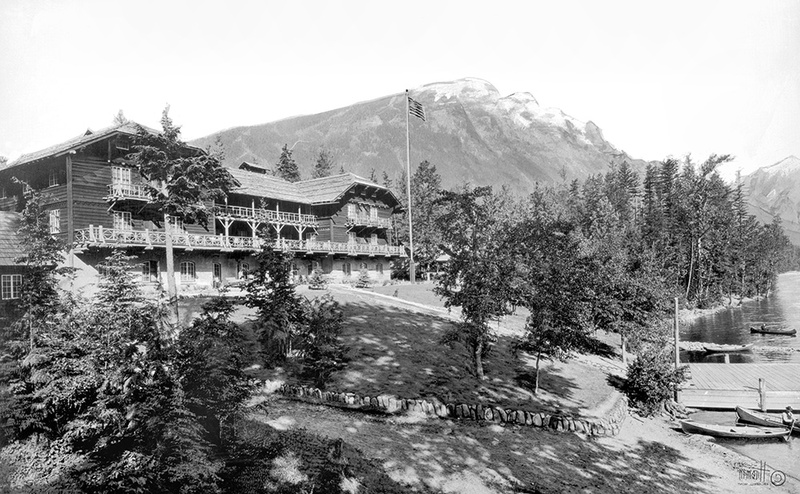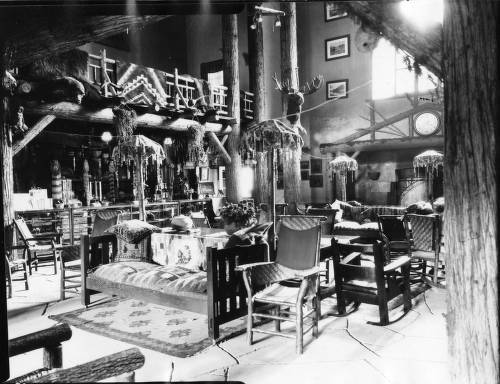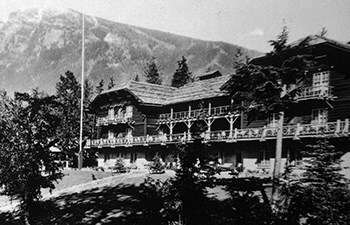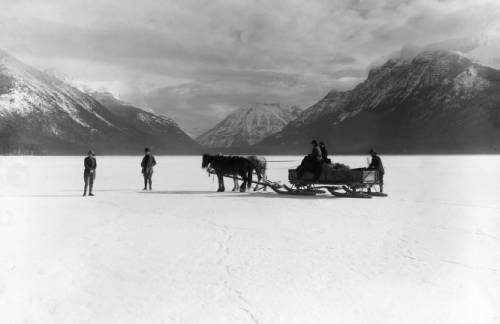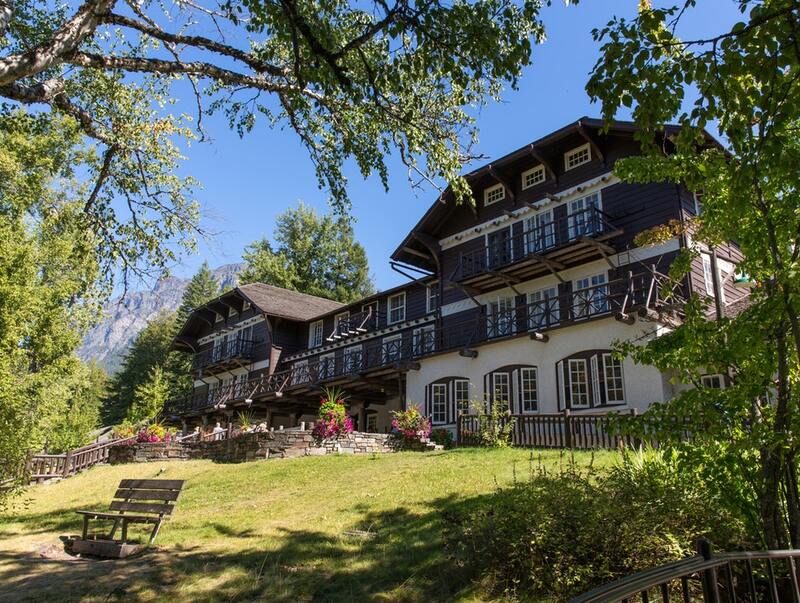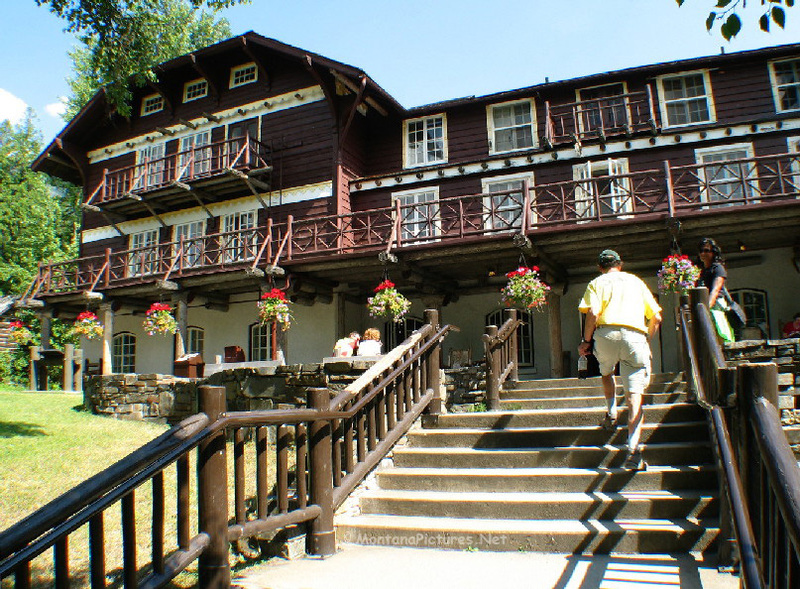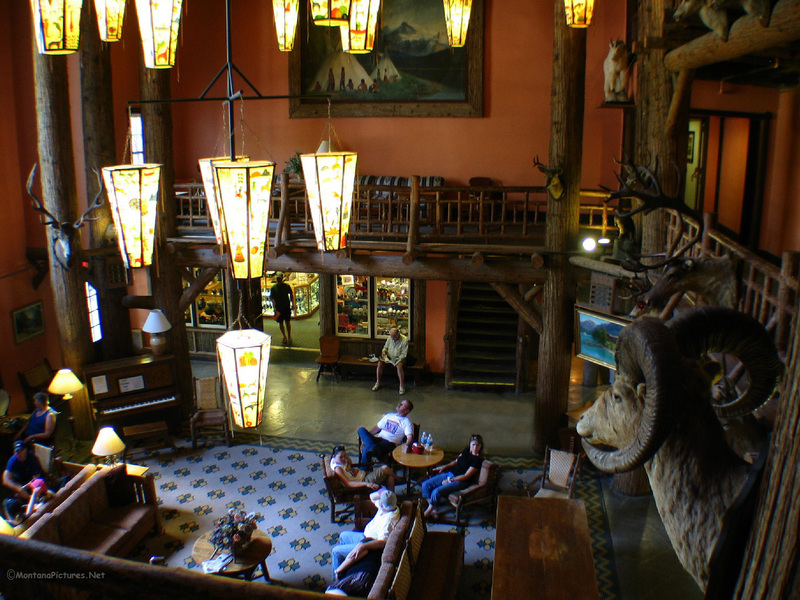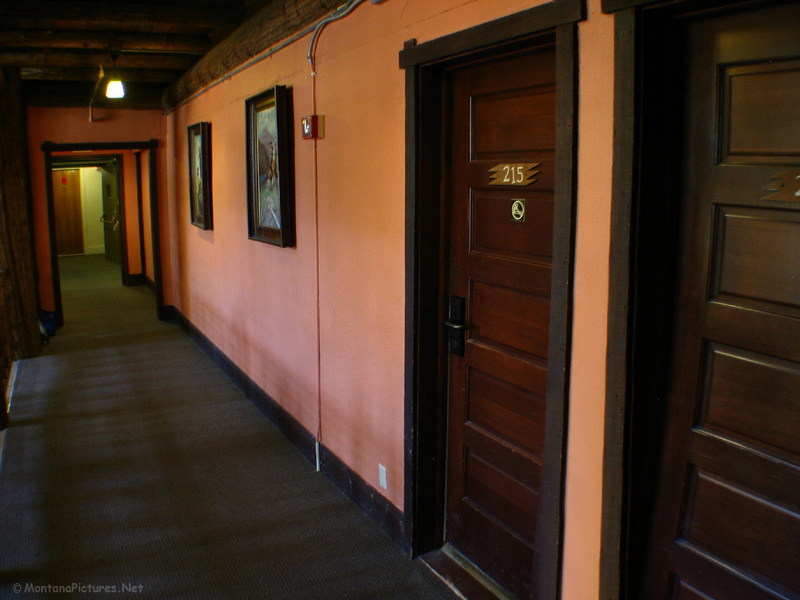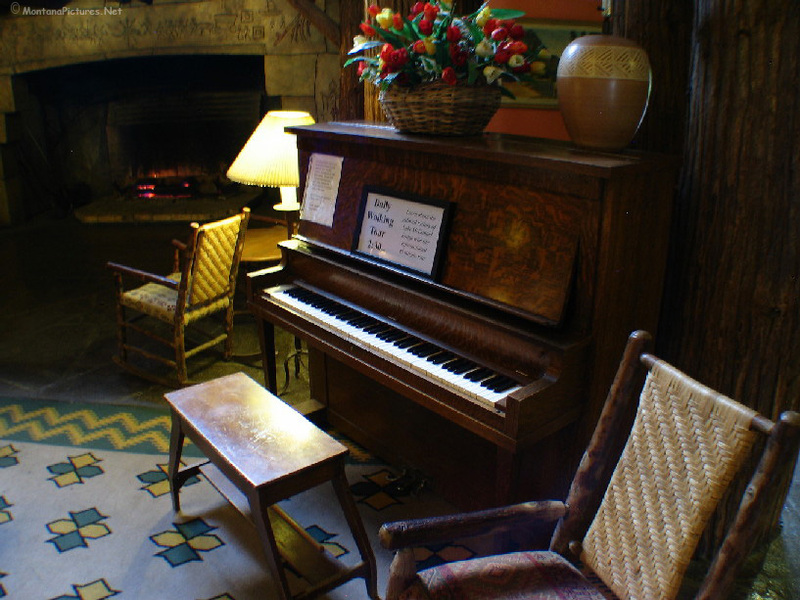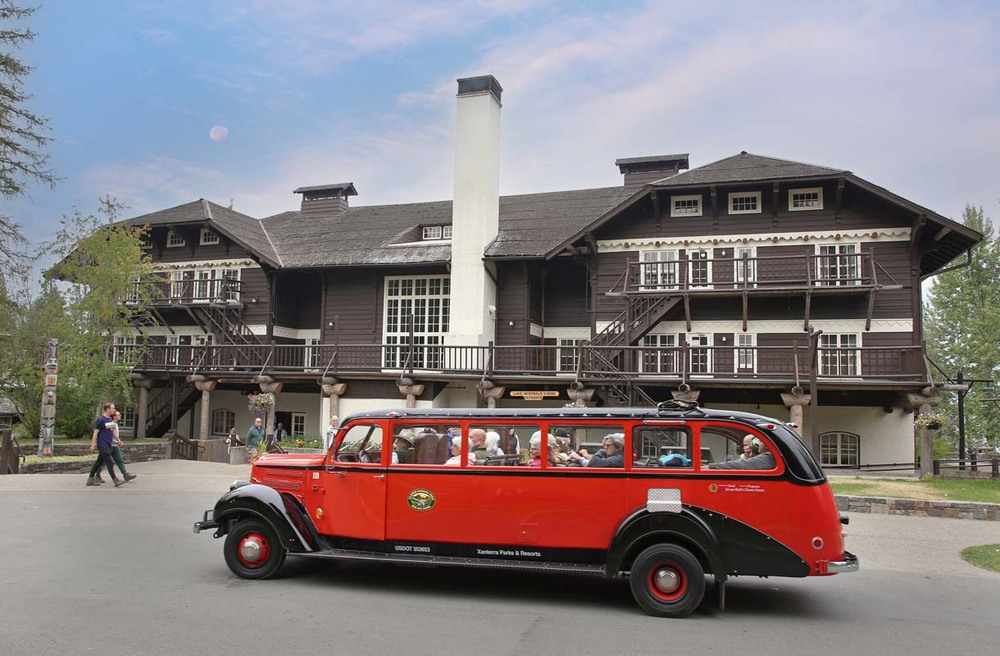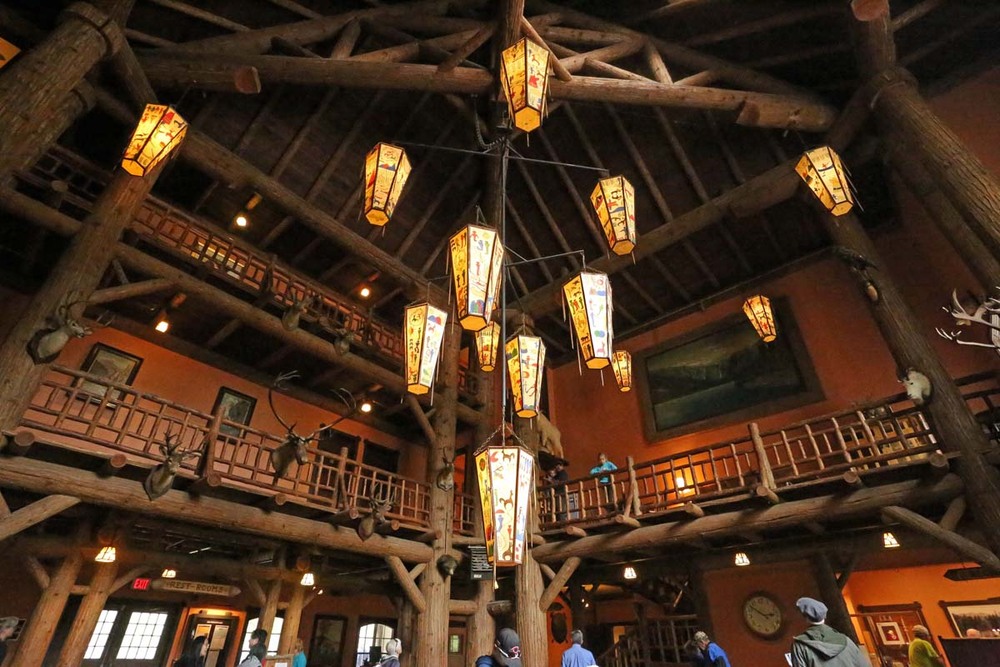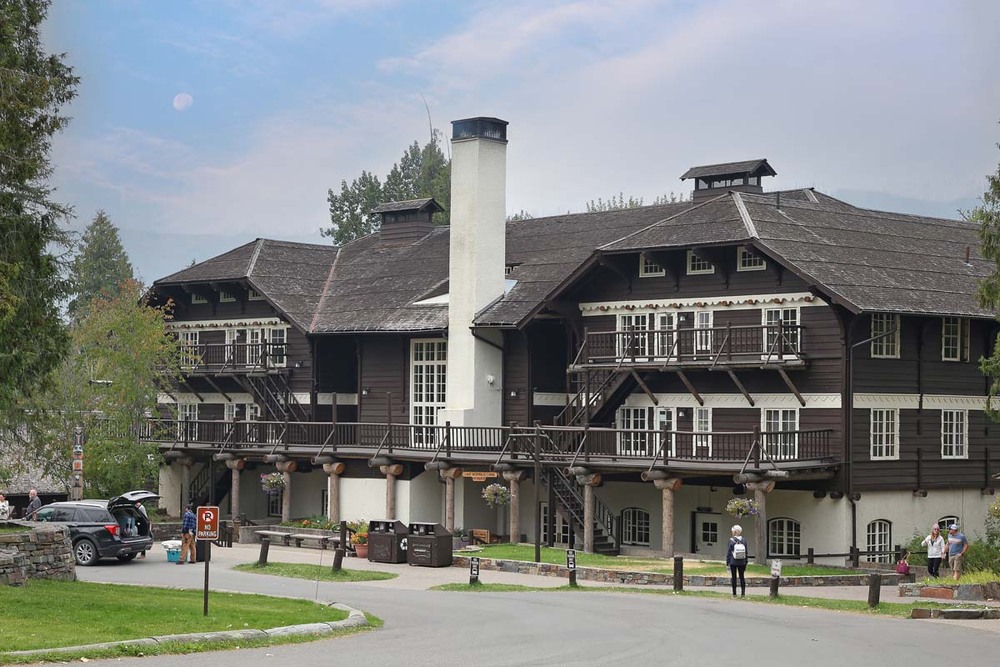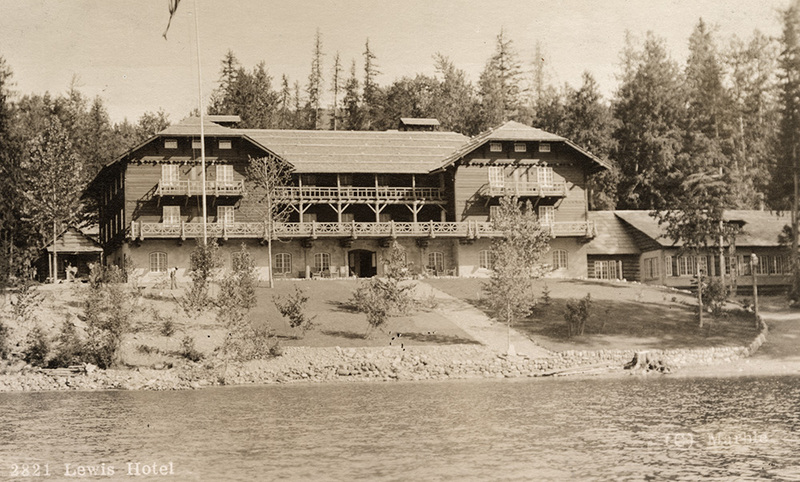
Sacred to the Kootenai Indians whose traditional homeland encompasses the west side of Glacier National Park, Lake McDonald began attracting tourists as soon as the railroad reached the region in 1891. Recognizing the value of his property as an overnight destination, homesteader George Snyder constructed a two-story, frame hotel on the shores of the lake in 1895. In 1906, Columbia Falls businessman John E. Lewis purchased Snyder’s holdings, adding cabins to the operation. Congress declared the region a national park in 1910 and, four years later, Lewis replaced Snyder’s original structure with a much more imposing facility dubbed the Lewis Glacier Hotel. The Spokane, Washington, architectural firm of Kirtland, Cutter and Malmgram designed the three-story, Swiss style chalet to match other park structures built by the Great Northern Railway. Lewis’s lodge featured massive unpeeled logs supporting the balcony-lined grand lobby. An oversized inglenook-type fireplace on one end warmed chilled guests while spectacular lake views on the other side encouraged visitors to relax on the wide front porch or on upper-story balconies. Since there was no road to the site, construction materials had to be skidded over the frozen lake in winter and carried by boat in the spring. Likewise, guests arrived by boat until 1921 when the lower portion of Going-to-the-Sun Road was completed from Belton (now West Glacier) to the hotel. Lewis sold his hotel complex to the Great Northern in 1930, and two years later the National Park Service acquired the property from the railroad. Following name changes to Lake McDonald Hotel in 1930 and Lake McDonald Lodge in 1958, the building was designated as a National Historic Landmark in 1987.
Images

